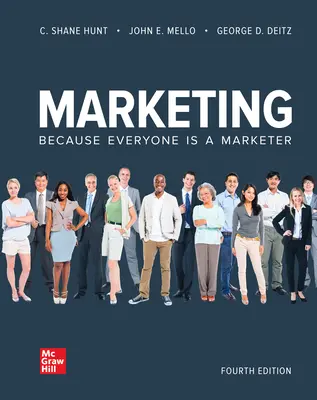Posted by admin on Sep 1, 2015
When HBO expanded its internet product offerings, it was only a matter of time before it started getting interested in kids. The deal for rights to premiere the next five seasons of Sesame Street on HBO’s cable channel and streaming services, alongside other Sesame Network content produced exclusively for HBO, shows just how important children’s programming has become to anyone who wants to market to and maintain a massive subscriber base in a marketplace being reshaped by cord-cutting behavior. Netflix, Amazon, and other streaming services have gained a lot of attention for HBO-style prestige dramas, such as Orange Is the New Black and Transparent. The aggressive moves by these streaming services into kid-focused programming has received far less attention. Nearly a quarter of television content available on Amazon is children’s programming, according to SNL Kagan data from October 2014, and 17 percent of Netflix shows are likewise aimed at kids. Netflix first started a separate service of children’s programming in 2011, allowing parents to quarantine their kids in a place where they wouldn’t encounter inappropriate material or tilt the service’s recommendation engine toward animated musicals. Netflix in the following year signed a deal that, starting in 2016, will put all of Disney’s first-run movies onto its streaming service after they leave theaters. Next came a pact with DreamWorks Animation to produce 300 hours of new television programs featuring established DreamWorks characters and brand-new franchises. The battle for kids is about keeping their parents around even when a favorite show is on hiatus. Streaming services are far easier to cancel and resubscribe than cable-TV, so the goal for marketers is to make that decision harder. HBO didn’t have to worry much about using kids shows to retain customers until the external marketing environment started to change recently. Cable channels are offered as part of larger bundles of channels and within other services, such as broadband and phone service. Getting rid of your HBO just because the latest season of Game of Thrones ended is, to most subscribers, probably more trouble than it’s worth. But appointment viewing keeps people loyal to only a certain extent. It makes more sense to be all things to all people when your subscription service is an easily eliminated line item in the household budget. Hulu, which unlike Netflix, Amazon, and HBO Now is focused largely on advertising, has also been less active in kids’ shows. The service does include content from Nickelodeon and Cartoon Network and offers a kids-only service that is available solely through its paid tier. But...
Read More
Posted by admin on Aug 14, 2015
I hope everyone had a great summer. I have been busy preparing my Principles of Marketing course for the Fall and I am very happy to share that the new iSeeIt! videos are now available in Connect. iSeeIt! Videos are short, contemporary videos providing an engaging introduction to marketing learning objectives delivered in a fun, animated way. Easy-to-use, iSeeIt! videos can serve as lecture launchers or can be assigned within Connect with auto-graded questions. You can find these 17 videos now available within Connect in two places: 1) To assign: from within Connect, select Add Assignment, select Question Bank, choose a chapter, select Interactive 2) To use as lecture launchers: from within Connect, select Library, instructor resources You can also find a sample of these videos at http://successinhighered.com/marketing/iseeit-videos/ I am excited to use these in my Principles course this semester and I wish all of you a great start to a new school year. ...
Read More
Posted by admin on Jul 31, 2015
When Taco Bell introduced a food-ordering app in October, the chain figured it could speed up service for customers and cut down on wrong orders. What Taco Bell didn’t know was how this might change consumer behavior and how much extra food Americans order when they do so from the privacy of their smartphones. That’s why Taco Bell’s Live Más app, available for its 6,000 U.S. restaurants, has been downloaded more than 3 million times. Customers who use it also spend more than $10 on an average order—about 20 percent more than those who order in person. The app is pretty easy to use for most customers. After storing your credit card information, tap and swipe to select from the menu, then hit “submit.” To ensure the food is hot, the order is filled only when a customer is within 500 feet of a Taco Bell and notifies the store that they will pick up the food inside or at a drive-thru window—the app includes what’s known as a geofence to determine a user’s location. Taco Bell’s same-store sales rose 6 percent in the quarter that ended in March. The app has also reinforced Taco Bell’s standing with young, tech-savvy customers. Other companies are trying to go in this same marketing direction. Starbucks takes an estimated 8 million of them through customers’ phones each week and ordering ahead is available at only about a third of its U.S. locations. McDonald’s and Burger King have lagged behind on mobile ordering. Burger King’s app provides coupons and locations; McDonald’s has said it will release a global app this year but hasn’t said whether it will take orders. Competitors may want to replicate one surprising finding from Taco Bell’s market research. In early surveys by the company, customers reported that the food ordered on a smartphone tasted better. Source: Craig Giammona. “Taco Bell’s App is a Fix for the Munchies” Bloomberg.com, July 9, 2015. Discussion Questions: 1.How does the Live Mas app help Taco Bell’s market positioning? 2.If you were a marketer for Taco Bell, what other features would you include in the app to increase profits and improve the customer...
Read More
Posted by admin on Jul 6, 2015
One of the times I see the greatest benefit of using Connect in my Marketing course is during the summer term. Today, many instructors across the country are starting their 4 or 5 week summer Principles of Marketing courses. As an instructor, one of the most intimidating things about these shortened classes is trying to get all of the information to students in about 35% of the time of a traditional semester course. Here are a few tips that might be helpful in your summer Principles of Marketing class when using the Hunt/Mello product: 1. Assign something from Connect each day. These short interactive or other assignments that are built into the Hunt/Mello Connect product help keep your students engaged each day of this shortened class. I have found this helps my students in both face-to-face and online classes not fall behind which can be a big problem in the summer term. 2. Assign Learnsmart for every chapter that you cover. Learnsmart provides an incredibly powerful adaptive tool that will help your students more quickly understand where they are struggling and focus their studies during the limited time of a summer course as efficiently as possible. 3.Consider utilizing the Tegrity feature in Connect to provide additional lecture content for students or assigning the Video overviews for each learning objective that are already into the Hunt/Mello Connect product. This provides the instructor a way to cover material they were not able to get to in class or provide additional content that can help Principles of Marketing students be more successful. I am very confident that utilizing Connect with the Hunt/Mello product can make your summer course more engaging and beneficial for your students in...
Read More
Posted by admin on Jun 11, 2015
Whole Foods Market Inc., is opening a new line of stores focused on millennials, under the new name: 365 by Whole Foods Market. The idea is to create a chain that’s “fun and convenient,” the company’s new chief executive said in the statement. “A modern, streamlined design with innovative technology and a carefully curated product mix will offer an efficient and rewarding way to grocery shop.” Whole Foods is creating the chain to help reinvigorate sales and get back its pioneer image. With Wal-Mart Stores Inc. and Kroger Co. pushing deeper into natural and organic food, Whole Foods has struggled with the perception that its groceries are too expensive and easily found elsewhere. The new store concept will have cheaper offerings. The company says it is embarking on the new store concept after reporting quarterly revenue and same-store sales that trailed analysts’ estimates. Other proposed names for the new stores also included Dailyshop and Swiftgoods. It will be interesting to see how this new market positioning strategy is perceived by consumers. Source: Craig Giammona and Leslie Patton. “Whole Foods’ New Millennial-Focused Chain Will Be Called 365” Bloomberg.com, June 11, 2015. Discussion Questions: 1. What do you think the results will be for Whole Foods using this new market positioning strategy? 2. Would you have chosen 365 for the name of the new Whole Foods stores or would you have chosen one of the other proposed...
Read More
Posted by admin on May 15, 2015
Macy’s, one of the nation’s oldest retailers, is one of the leading marketing organizations when it comes to digital, social and mobile technology. The New York-based department store chain is using technology to connect with consumers on a local and national level. The strategy began with the My Macy’s program in 2009 which gave local executives more power following the rebranding of hundreds of department stores under the Macy’s name. The effort to think locally while maintaining a national brand, a challenge for many organizations across the world, pushed marketers at Macy’s to use technology to more effectively reach consumers. For example, during the Kentucky Derby, Macy’s used social media and geo-targeted emails and push notifications to encourage Kentucky-area shoppers to try the store’s collection of Derby hats. That messaging wasn’t used for the flagship Herald Square location in Manhattan. Social media reaches across all of Macy’s touchpoints. It’s used to offer everything from sneak peeks of new collections to promote sales. The brand’s latest social effort, called “American Icons,” kicks off this week. The program encourages fans to share photos of what America means to them for a chance to be included in the national broadcast of the Macy’s Fourth of July Fireworks. As mobile devices become more entwined in our daily lives, the department store chain is also expanding its mobile presence. The Macy’s app, which launched six years ago, has evolved into a personal shopping assistant. It helps shoppers navigate the store, find additional sizes, colors and related items. Macy’s has put its media muscle behind the app through national promotions including a contest that encouraged shoppers to download the app, and by putting it front and center during major shopping periods like the holiday season. Macy’s also has an app for its Thanksgiving Day Parade, which helps spectators find their way around the parade route and get behind-the-scenes news and information on the event. It will be interesting to see how other established retailers integrate social media as part of their overall marketing strategy. Source: Ashley Rodriguez. “Macy’s Embraces a Digical World” Advertising Age, May 13, 2015. Discussion Questions: 1.How can Macy’s social media marketing strategy add to the firm’s brand equity? 2.What metrics would you use to measure Macy’s success with their social media marketing...
Read More





